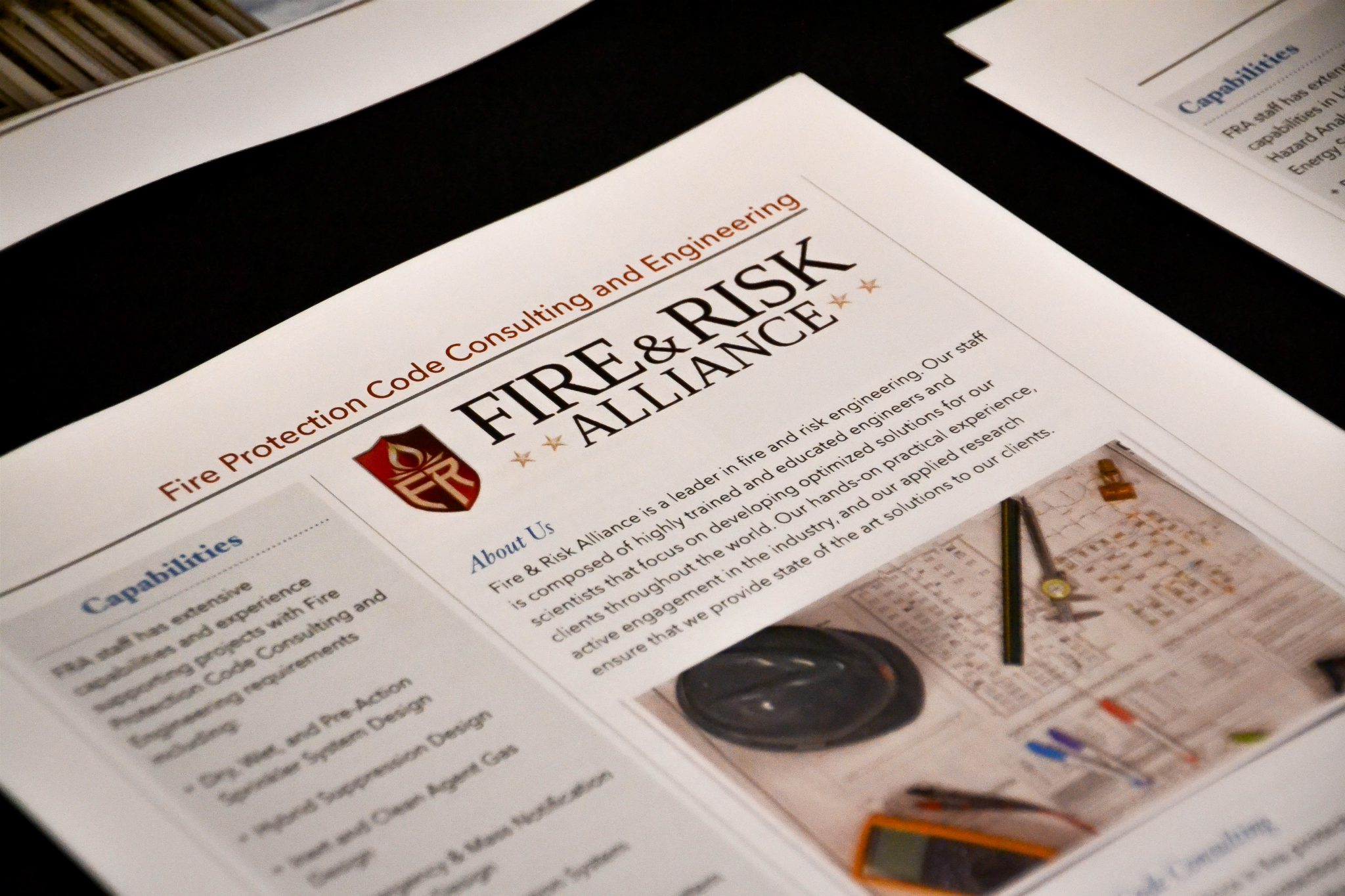By Sasha Allen
For The Diamondback
The University of Maryland hosted a Fire and Life Safety Ecosystem Symposium, the first event of its kind to open up opportunities for research at the university.
The event, hosted by the National Fire Protection Association and this university, was held on Sept. 28 and Sept. 29 at The Hotel at UMD. It featured keynote speakers from across the country and included events and workshops for attendees.
James Milke, the chair of the fire protection engineering program, was one of the organizers of the event.
[UMD faculty, staff to receive 4.5% cost of living adjustment]
“Part of the idea was to help educate the next generation of engineers and architects and people involved in design and fire safety decisions,” Milke said. “Through many of the presentations over the last day and a half, there have been identified gaps, things that we don’t know completely to be able to make completely informed decisions.”
Milke said these gaps in research are opportunities to provide a multidisciplinary focus on fire safety. Because this university has one of the only fire protection engineering programs in the country, the organizers thought the campus would be a prime location to hold the event.
Lorraine Carli, an event organizer and the outreach and advocacy vice president for the NFPA, echoed Milke’s realizations on information gaps, and elaborated on some of the topics she would like to see more information on.
“There’s a lot of electronics, there’s a lot of fabrics that didn’t even exist years ago, that have a greater ability to burn faster,” Carli said. “So we learn all of these things, and then we make sure that from a practical standpoint, we’re advancing how we deal with the risks.”
[UMD Atmospheric and Oceanic Sciences department presents seminar on AI weather modeling]
Carli said going through the campus, she saw electric scooters and bikes that hadn’t been safety factors in the past.
“One of the aspects of the fire and life safety ecosystem in this discussion has been to ensure that fire safety moves alongside technology advances,” Carli said. “All of these things make our lives really easy, like technology and e-bikes and things like that, but they also bring new risks that we haven’t seen from a fire safety perspective.”
While it widened the ability for research, the symposium also brought together people from different professions who deal with fire safety issues but might not typically interact on an everyday basis.
Ryland Overly, a risk control consultant for an insurance company, attended the conference alongside architects, NFPA members, designers and engineers. Overly said he originally decided to attend the conference to learn more about the property sides of insurance, but he left with a better understanding of how building design and manufacturing impacts fire safety.
“One of my biggest takeaways was just the amount of disconnect between the engineering side of things and the code compliance side of things,” Overly said.
Milke said he hoped the event would bring together people of different professions and was happy with the turnout.
“We were hopeful of attracting a wide variety of people to this meeting,” Milke said. “We’re delighted to have the variety and the diversity of disciplines here.”
Looking ahead, the organizers of the event are hoping to make the symposium an annual event.



